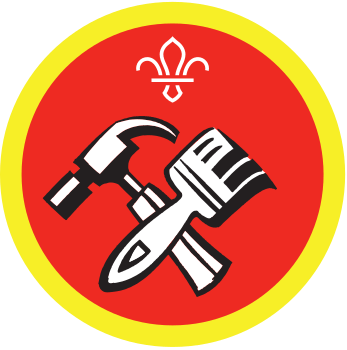Stand by me
You’ll need
- Coloured pens or pencils
- Hammer
- Nails
- Drill
- Sandpaper
- One piece of soft or hard wood (148x210mm) for each person
- Wood saw
- Screwdriver
- Template
- Wood glue
Design your stand
- Give everyone a copy of the finished stand template, and a pen. Everyone should decide what they’ll use their stand for, as this will affect their design.
For example, it could be a chair for a teddy, or a charging stand for a mobile device.
- Everyone should draw their design on their template. Their design must include at least one screw and one nail, which they could use to hold things in place or hang things from.
It might also need additional features, for example a hole for a charging cable to fit through.
Make your stand
- Give everyone a piece of wood.
- Use a ruler to measure halfway along the piece, and mark a line to cut.
- Use the saw to cut the wood. Use the rasp or sandpaper to smooth any rough edges.
- On one piece of wood, mark a rectangle as wide as the wood is thick. This rectangle will become a slot for the other piece of wood.
- Use a drill to make a hole in this rectangle, to begin the slot. Use a saw or rasp to square the hole and adjust.
- Take the second piece of wood, which you will be making into a ‘paddle’ shape. Use the size of the slot as a guide to determine how wide the paddle’s handle should be. Mark the shape on the piece of wood.
- Use the saw to cut along the lines, and the sandpaper to smooth any rough edges.
- Add the other features from your design, such as extra holes. Use the hammer to add the nail, and the screwdriver to add the screw.
- Slot the ‘paddle handle’ into the slot in the first piece of wood, dabbing a little wood glue between the pieces to hold them together.
- Rub down the surfaces lightly with sandpaper.
- Apply the stain, or paint your creation.
Reflection
This activity helped you develop practical skills. What skills did you practice when making your stand? When else might you use some of these skills? Had you tried any of these skills before? Did you have to use different skills at different stages of making your stand?
This activity also helped you to be independent. Did you make your own decisions about design? Did you get to try things for yourself, without an adult doing it for you? Did you do anything for yourself for the first time? Was it still useful to have help from other people?
Safety
All activities must be safely managed. You must complete a thorough risk assessment and take appropriate steps to reduce risk. Use the safety checklist to help you plan and risk assess your activity. Always get approval for the activity, and have suitable supervision and an InTouch process.
- Sharp objects
Teach young people how to use sharp objects safely. Supervise them appropriately throughout. Store all sharp objects securely, out of the reach of young people.
- Glue and solvents
Always supervise young people appropriately when they’re using glue and solvent products. Make sure there’s plenty of ventilation. Be aware of any medical conditions that could be affected by glue or solvent use and make adjustments as needed.
- Manufacturer’s guidelines
All vehicles will be different so always follow the manufacturer’s guidelines.
- PPE
Before completing this activity make sure you have suitable personal protective equipment (PPE). This could include eye or ear protection, gloves, and anything else you need to protect yourself. You’ll know what you need as a result of completing the risk assessment for the activity.
Scale the design up to make a bigger stand - you could even use it as a chair.
Some people may need more help than others. People could work in pairs or groups if they want to, or you could ask parents or carers to stay and help.
All Scout activities should be inclusive and accessible.
